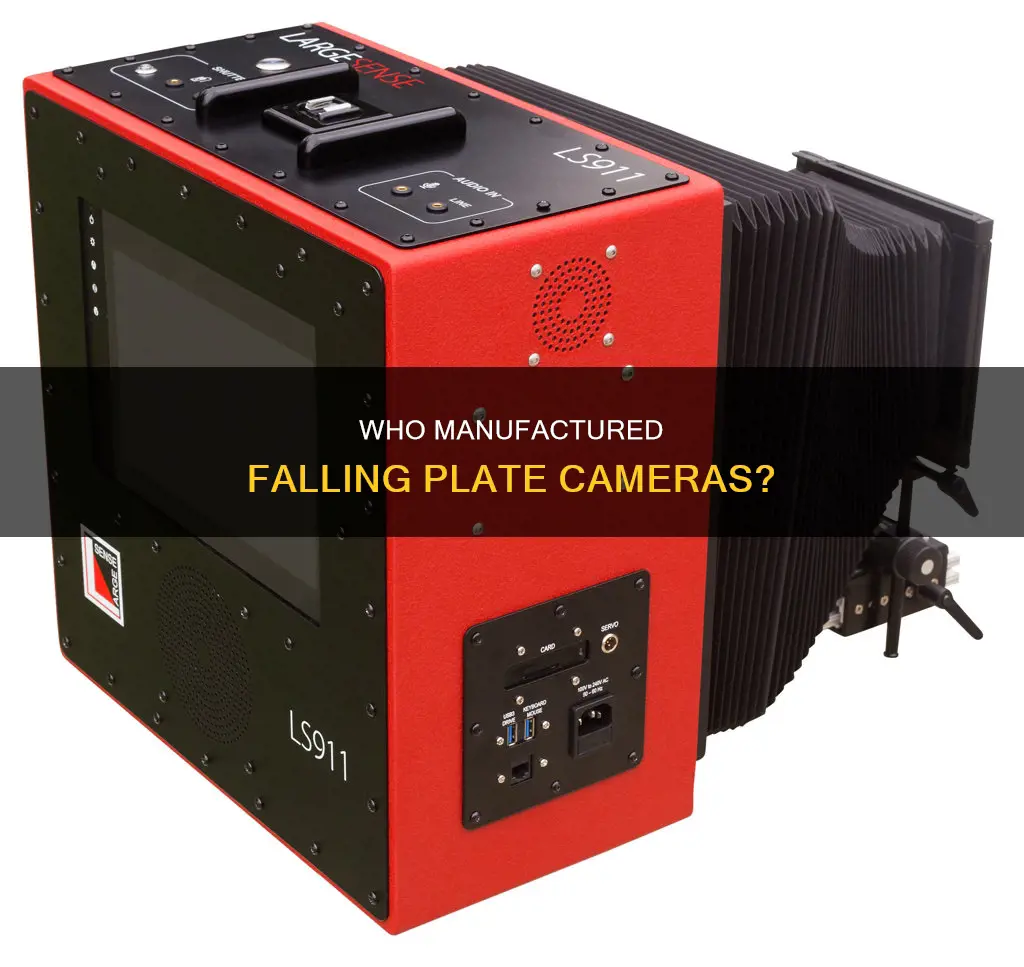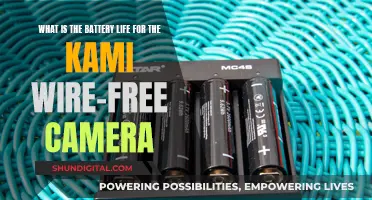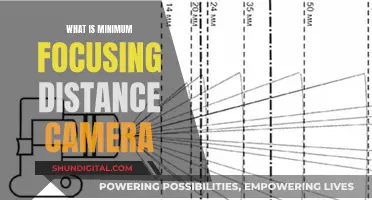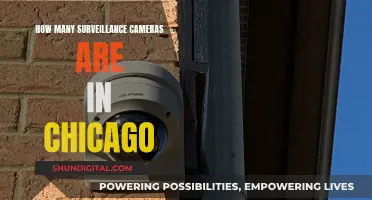
Falling plate cameras were a popular type of camera in the 1890s. They were large box cameras that allowed for a series of 8 to 12 exposures on medium or large format glass plates or film sheets without needing to be reloaded. The term falling plate camera refers to the fact that the holders of used plates would fall face down onto a stack at the bottom of the camera, or an unused plate would fall from a stack into the focal plane position before exposure. The most common version of this camera type was the Midg, which was popular in Britain at the start of the 20th century and sold by Butcher and Sons. Other companies that made falling plate cameras include Hugo Svensson & Co, Kamerafabrik, and Jonte.
What You'll Learn
- The Midg Falling Plate Camera was sold by Butcher and Sons
- The Svensk Express 4B was made by Hugo Svensson & Co, Kamerafabrik, Göteborg
- An unnamed falling plate camera was sold by Lizars
- The Brevete Arme French Falling Plate Camera was built by Jonte in Paris
- The Conley Quick Shot was made by an unknown manufacturer

The Midg Falling Plate Camera was sold by Butcher and Sons
The Midg was a box-form 'falling plate' camera sold by Butcher and Sons in the early 20th century. It was first introduced in 1904, and was still being advertised in the early 1920s. The camera was probably manufactured in Germany, and imported by Butcher and Sons. The company did not have its own manufacturing plant, and so it is likely that the camera was made by another company, a common practice at the time.
The Midg was a quarter-plate camera, and could take twelve glass plates measuring 4.1/4 x 3.1/4 inches. The glass plates were loaded into carriers, which were then slid onto rails at the back of the camera. The plate change mechanism caused the exposed plate to fall forward into the bottom of the camera, while the next plate moved forward. The shutter speed could be altered by varying the shutter spring tension, and the aperture was changed with an external iris assembly. The Midg had a single large lens mounted internally, and focus could be controlled using supplementary lenses.
The camera was sold as the "King of Guinea Camera", and was available in several models with different specifications. Most were box-shaped, but some had a folding bed at the front. The camera was exported to Japan, and was also sold by Lizars. The Midg played a small role in popular culture, as it was used to take the famous Cottingley Fairies photographs in 1917.
Charging Camera Batteries: Portable Power Options
You may want to see also

The Svensk Express 4B was made by Hugo Svensson & Co, Kamerafabrik, Göteborg
The Svensk Express 4B is an old camera, manufactured between 1893 and the early 20th century. It measures 209x104x162mm (roughly 8x4x6 inches). On the front of the camera are its controls: distance, shutter speed, aperture, mode (normal, T or B) and shutter release. The back of the camera opens to reveal the plate-changing mechanism and the film plate counter. The glass plate holders are made of metal and the camera comes with six of them, which accept 9x12cm plates.
The camera has two viewfinders, a distance setting, a lens and an aperture. The aperture has a full selection of f/11, "S", f/14, f/22 and f/32. The shutter release is a round knob on the left, and the camera has two shutter time controls: "T", "B" or normal ("Ö", "T" and "M").
The Svensk Express 4B is a rare camera with very little information available online.
Samsung Galaxy S10: Night Mode Camera Feature Explained
You may want to see also

An unnamed falling plate camera was sold by Lizars
Falling plate cameras were a type of large box camera that became popular in the 1890s. They allowed photographers to make a series of 8 to 12 exposures on medium or large format glass plates or film sheets without the need for reloading. The term "falling plate camera" refers to the mechanism where the holders of used plates would fall face down onto a stack at the camera's bottom, or an unused plate would fall into place before exposure. These cameras were loaded with a set of tin plate holders or tin film sheet holders, which had to be loaded with a film sheet or sensitized glass plate beforehand.
The Lizars camera was similar to other falling plate cameras of its time, such as the "Svensk Express 4B" manufactured by Hugo Svensson & Co, Kamerafabrik, Göteborg, and the "Midg" sold by Butcher and Sons. The "Midg" was a popular falling plate camera in Britain at the start of the 20th century and played a small role in popular culture through its use in the Cottingley Fairies hoax photographs.
The 1970 Cameros: A Comprehensive Production Overview
You may want to see also

The Brevete Arme French Falling Plate Camera was built by Jonte in Paris
Falling plate cameras were introduced in the late 19th century to take advantage of the new dry gelatin photographic plate technology. This type of camera was characterised by its use of a magazine of plates that could be changed either manually or by a mechanism. The magazine typically held around a dozen plates, and the camera could be used handheld.
The camera is operated by a lever on the front that controls the shutter, and another for the aperture. The lens can be protected by a metal disc. The back of the camera opens in two parts to load and unload the plates. A spring mechanism moves the plates forward, and a lever on the rear right side transports them. This simple mechanism works very well, with each movement of the lever causing a plate holder with the glass negative to fall into the camera body.
The Brevete Arme French Falling Plate Camera is a rare example of early 20th-century camera technology. It is a well-preserved piece of photographic history, with all its original parts functioning as intended. This camera would be a valuable addition to any collection of vintage photography equipment.
Charging the DSC-S780 Camera: A Step-by-Step Guide
You may want to see also

The Conley Quick Shot was made by an unknown manufacturer
The Conley Quick Shot is an example of a "falling plate" camera, a type of large box camera that became popular in the 1890s. It allowed photographers to take a series of exposures on medium or large format glass plates or film sheets without the need for reloading. The camera was manufactured by an unknown company around 1910.
Falling plate cameras featured a variety of easy plate-changing mechanisms. They were typically loaded with a set of tin plate holders or tin film sheet holders, which needed to be loaded with a film sheet or sensitized glass plate beforehand. The term "falling plate" refers to the holders of used plates falling face down onto a stack at the camera's bottom, or an unused plate falling into the focal plane position before exposure.
The Conley Quick Shot, in particular, had an internal lever that may have been used to keep the used plates lying face down or for some other purpose. Unfortunately, not much else is known about this camera or its manufacturer.
Other companies that produced falling plate cameras include Hugo Svensson & Co., Kamerafabrik, Butcher and Sons (later becoming Ensign), and Adams & Westlake, who were renowned makers of magazine cameras.
Charging Cameras in Remote Wilderness: Alone's Secret
You may want to see also
Frequently asked questions
Falling plate cameras were made by a variety of companies, including:
- Hugo Svensson & Co, Kamerafabrik, Göteborg (Swedish origin)
- Butcher and Sons (which later became Ensign)
- Lizars
- Adams & Westlake
- Brevete (Jonte) Arme
Some sources also suggest that the "Midg" falling plate camera was likely made in Germany, but this is not confirmed.
Falling plate cameras are a type of large box camera that uses a mechanical plate-changing facility to take a series of exposures on medium or large format glass plates or film sheets without reloading. The glass plates are loaded into carriers that are then slid onto rails at the back of the camera. Once a plate is exposed, it falls forward into the bottom of the camera, and the next plate moves forward.
Falling plate cameras were popular from the 1890s to around World War I and the early 1920s.







